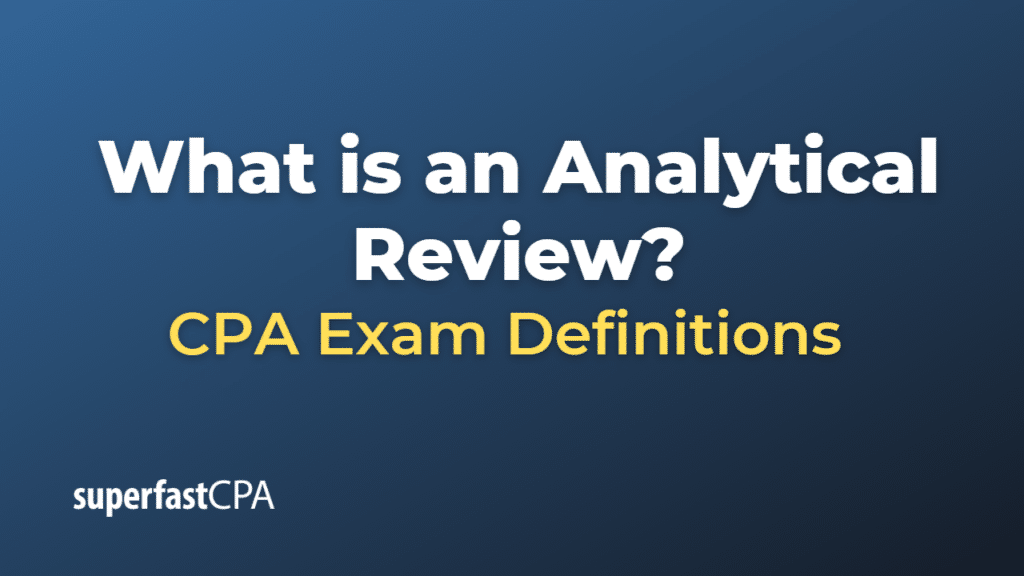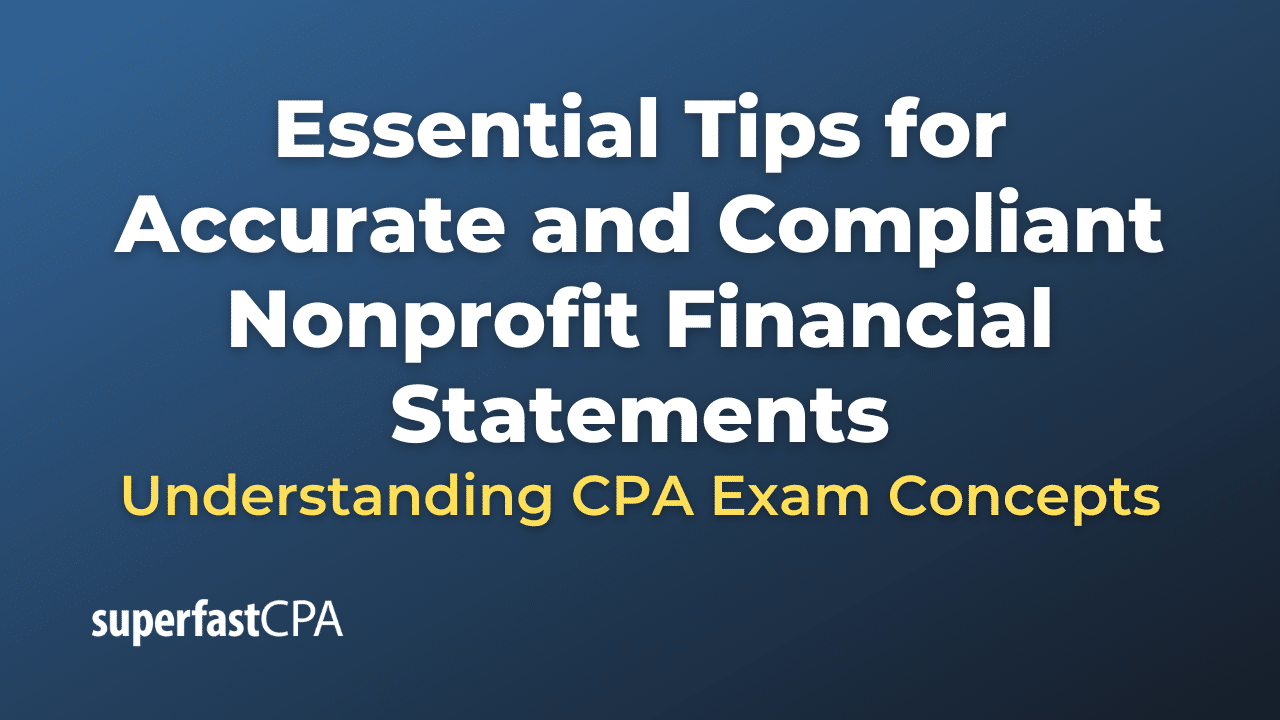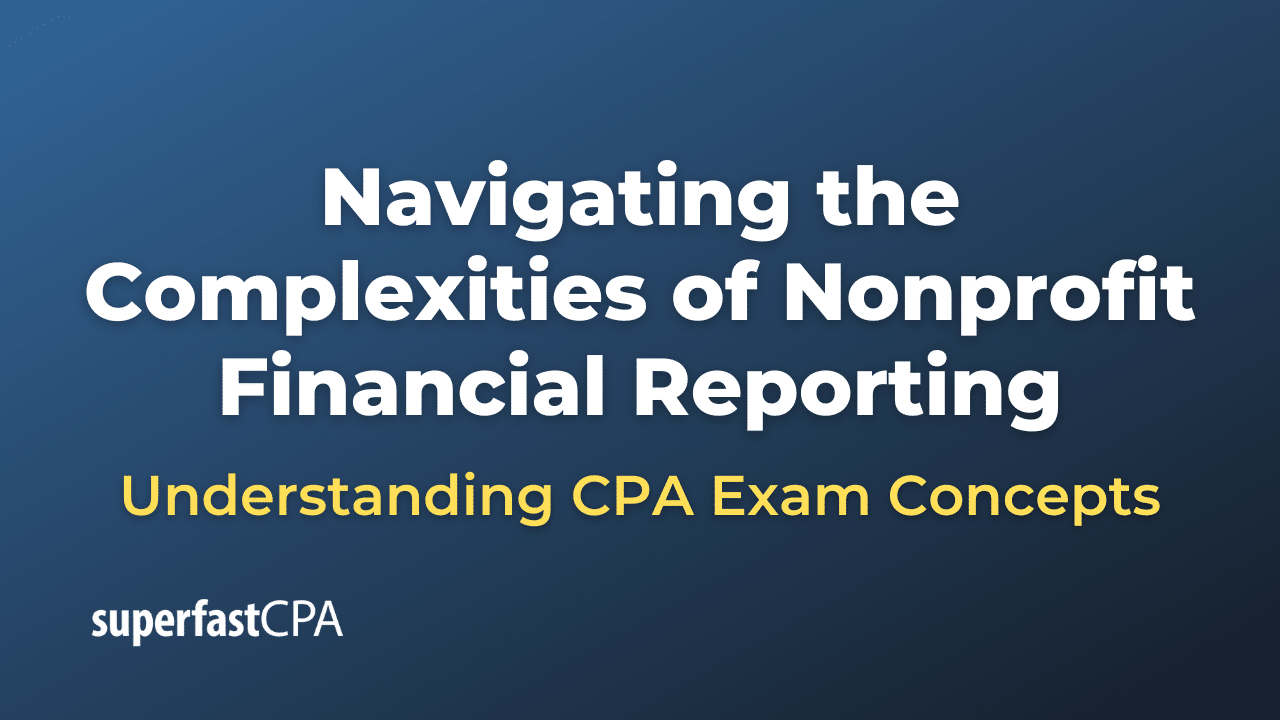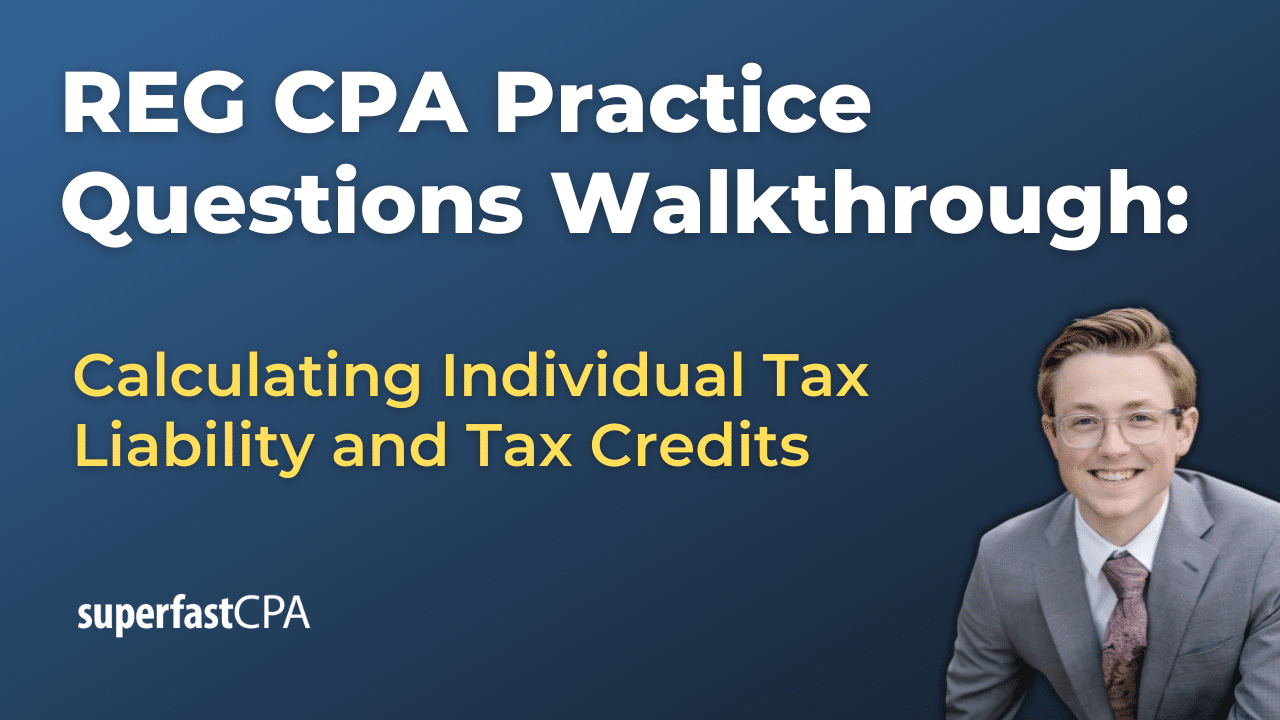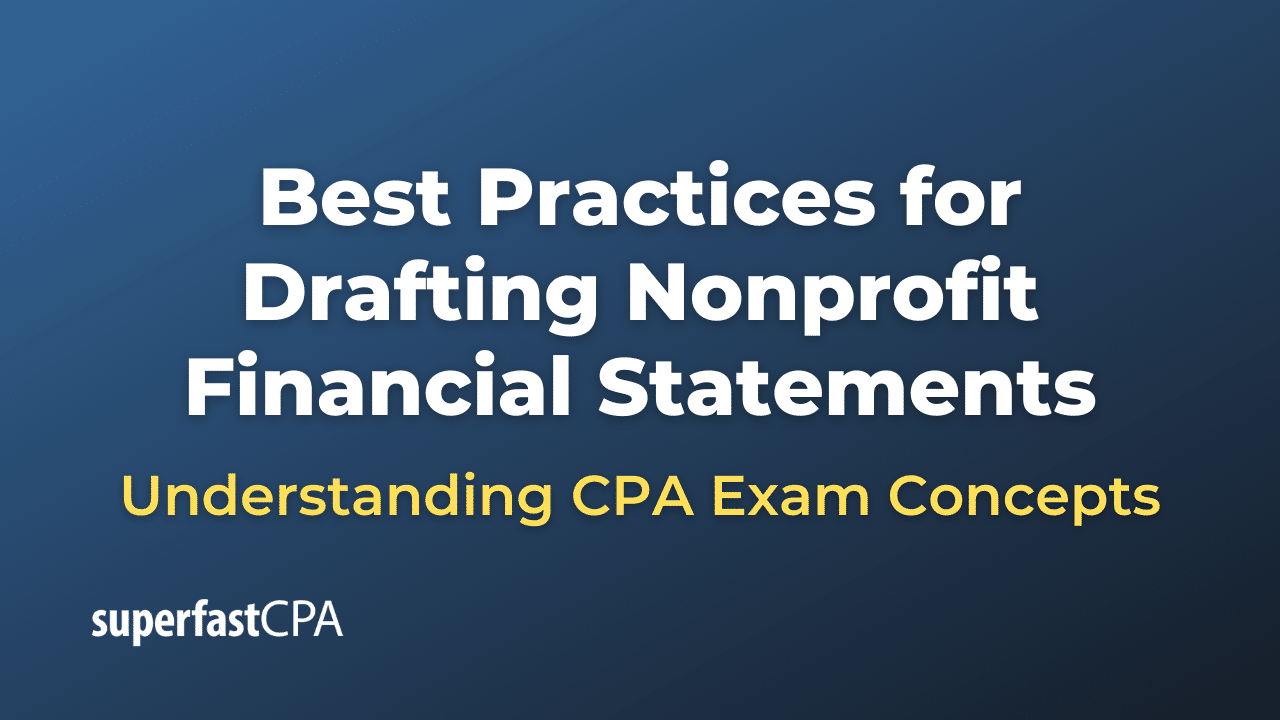Analytical Review
An analytical review is a method used by auditors, accountants, or financial analysts to evaluate a company’s financial information by analyzing trends, ratios, and relationships among financial data. The purpose of an analytical review is to gain an understanding of the organization’s financial performance, identify unusual fluctuations, inconsistencies, or potential errors, and assess the overall reasonableness of the financial statements.
An analytical review typically involves the following steps:
- Gather financial data: Obtain the company’s financial statements, including balance sheets, income statements, and cash flow statements, for the current and previous periods.
- Identify key accounts and relationships: Determine the most significant accounts and financial relationships that will be analyzed. These may include revenue, expenses, assets, liabilities, and equity accounts.
- Calculate financial ratios and trends: Compute relevant financial ratios (such as profitability, liquidity, and solvency ratios) and analyze trends in key accounts over time.
- Compare actual results to expectations: Compare the company’s actual financial performance to its historical performance, budgets, forecasts, or industry benchmarks. Identify any significant deviations or unexpected changes that may warrant further investigation.
- Investigate unusual fluctuations or inconsistencies: If any unusual variations or inconsistencies are found, perform additional analysis or inquiries to understand the reasons behind these differences and determine if any errors or misstatements exist.
- Evaluate the overall reasonableness of the financial statements: Based on the analytical review, assess whether the financial statements appear to be accurate, complete, and fairly presented.
In summary, an analytical review is a valuable tool for auditors, accountants, and financial analysts to gain insights into a company’s financial performance, detect potential errors or misstatements, and assess the overall reliability of the financial statements.
Example of an Analytical Review
Let’s consider a simplified example of an analytical review for a hypothetical company, XYZ Inc.
- Gather financial data: We obtain XYZ Inc.’s financial statements for the current year (2023) and the previous year (2022).
- Identify key accounts and relationships: We decide to focus on revenue, cost of goods sold (COGS), gross profit margin, and operating expenses.
- Calculate financial ratios and trends: We compute the following:
- Gross profit margin: (Revenue – COGS) / Revenue
- Operating expense ratio: Operating Expenses / Revenue
2022 Financial Data:
- Revenue: $1,000,000
- COGS: $600,000
- Operating Expenses: $300,000
- Gross profit margin: ($1,000,000 – $600,000) / $1,000,000 = 40%
- Operating expense ratio: $300,000 / $1,000,000 = 30%
2023 Financial Data:
- Revenue: $1,200,000
- COGS: $780,000
- Operating Expenses: $320,000
- Gross profit margin: ($1,200,000 – $780,000) / $1,200,000 = 35%
- Operating expense ratio: $320,000 / $1,200,000 = 26.67%
- Compare actual results to expectations: We observe that while revenue has increased by 20%, the gross profit margin has decreased from 40% to 35%, and the operating expense ratio has decreased from 30% to 26.67%.
- Investigate unusual fluctuations or inconsistencies: We notice the decline in the gross profit margin and decide to investigate further. Upon inquiry, we learn that XYZ Inc. experienced a rise in material costs, leading to an increase in COGS. This explanation seems reasonable and supports the observed decrease in the gross profit margin.
- Evaluate the overall reasonableness of the financial statements: Based on our analytical review, we find no significant errors or misstatements in the financial statements. The decrease in gross profit margin is attributed to higher material costs, and the decline in the operating expense ratio indicates improved operational efficiency.
In this example, the analytical review helps us understand the financial performance of XYZ Inc., identify potential areas of concern, and assess the overall reasonableness of the financial statements.

